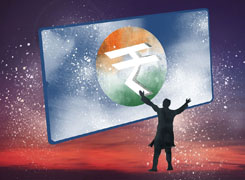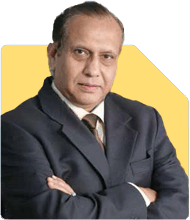Priya, a Remote Project Manager, Seeks Advice on Digital Body Language
Archana Deshpande | Answer |Ask -Follow
Image Coach, Soft Skills Trainer - Answered on Mar 05, 2025
She has been working with individuals and corporate organisations for more than 10 years during which she has helped professionals and students improve their soft skills, build confidence and enhance self-esteem.
An engineer from the PDA College of Engineering, Gulbarga, Archana had a successful career at Reliance Communications. But she has always been interested in teaching and training people. So she pursued a postgraduate diploma in teacher’s training at Pune’s Symbiosis Institute of Management Studies followed by teaching assignments in schools at Visakhapatnam and Mumbai.
Archana also holds an international certificate in image consulting and soft skills training from the Image Consulting Business Institute, Mumbai.... more

I am Priya from Varanasi, and I work from home as a project manager. I want some help to improve my digital body language, especially during video calls. I always try to stay focused and look engaged during meetings, but sometimes I feel like I might be missing out on some important non-verbal cues. How can I improve my online presence during video meetings and discussions with clients?
Wonderful to know that you are project manager and you want to improve your digital presence.
Body language is like learning any other language. It requires proper teaching, learning and then practicing the same to master it.
After the start of the work from home culture, taking care to present yourself well digitally has become very important.
It is important that you take care of your clothes, hair, make up, how much of you is visible, your backdrop, the angle of your camera, the use of your hands, the facial expressions, the voice modulation( so that ppl listen when you speak), you developing listening skills..... there is so much to learn.
I really cannot write here and teach you... this is all about showing you how to create your aura digitally.
This is my website..https://transformme.co.in/
Do get in touch to learn to create you amazing presence digitally.
Best wishes!!
You may like to see similar questions and answers below
Anu Krishna |1745 Answers |Ask -Follow
Relationships Expert, Mind Coach - Answered on Oct 06, 2020
Virender Kapoor | Answer |Ask -Follow
Self-improvement Expert - Answered on Jun 27, 2023
Archana Deshpande | Answer |Ask -Follow
Image Coach, Soft Skills Trainer - Answered on Dec 05, 2024
Archana Deshpande | Answer |Ask -Follow
Image Coach, Soft Skills Trainer - Answered on May 09, 2025
Dr Shyam Jamalabad |108 Answers |Ask -Follow
Dentist - Answered on Dec 05, 2025
Dr Shyam Jamalabad |108 Answers |Ask -Follow
Dentist - Answered on Dec 05, 2025
Dr Shyam Jamalabad |108 Answers |Ask -Follow
Dentist - Answered on Dec 05, 2025
Dr Dipankar Dutta |1836 Answers |Ask -Follow
Tech Careers and Skill Development Expert - Answered on Dec 05, 2025
Ulhas Joshi |280 Answers |Ask -Follow
Mutual Fund Expert - Answered on Dec 05, 2025
Dr Dipankar Dutta |1836 Answers |Ask -Follow
Tech Careers and Skill Development Expert - Answered on Dec 04, 2025
Ravi Mittal |676 Answers |Ask -Follow
Dating, Relationships Expert - Answered on Dec 04, 2025
Anu Krishna |1745 Answers |Ask -Follow
Relationships Expert, Mind Coach - Answered on Dec 04, 2025
Anu Krishna |1745 Answers |Ask -Follow
Relationships Expert, Mind Coach - Answered on Dec 04, 2025
Mayank Chandel |2562 Answers |Ask -Follow
IIT-JEE, NEET-UG, SAT, CLAT, CA, CS Exam Expert - Answered on Dec 04, 2025




























